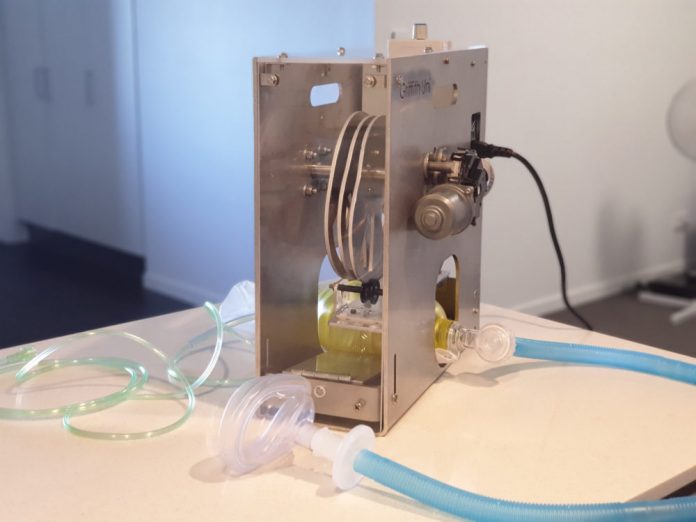
A team of researchers from Griffith University has developed a lifesaving device that turns locally available materials and resuscitation bags into makeshift ventilators.
Dubbed ‘the Ventil-8’, the device turns ambu bags – the hand pumps used in resuscitation or CRP – into automated ventilators and can easily be reproduced in countries still fighting COVID-19 at a fraction of the cost of a standard ventilator.
The device created by a team led by Professor Yongsheng Gao from the School of Engineering and Built Environment and Institute for Integrated and Intelligent Systems.
We needed this replacement ventilator to be low-cost and built quickly and relatively easily anywhere in the world,’’ Professor Gao said.
“A key design requirement was that all the materials it’s made from have to be available locally and accessible within one day, and in sufficient quantities to create thousands.”
Dr Mousa Hadipour, a research fellow at the Institute for Integrated and Intelligent Systems who was responsible for the mechanical aspect of Ventil-8, said the team settled on a prototype driven by an easily available car windscreen wiper motor.
“The makeshift ventilator meets the doctors’ needs, with adjustable volume and speed or breaths per minute and three different Inspiratory/Expiratory (I/E) ratios,’’ Dr Hadipour added.
Dr Thomas Challenger from Griffith’s School of Medicine said the prototype could be easily reproduced ‘in countries where doctors can’t access $25,000-$50,000 ventilators’.
“Due to the dire need for ventilators in these countries, the designs for the Ventil-8 ventilation assistance device are being made available open-source at GitHub for medical professionals around the world in the hope that it will help them avoid having to make the terrible choice of who gets a ventilator and who doesn’t,” Dr Challenger concluded.


















